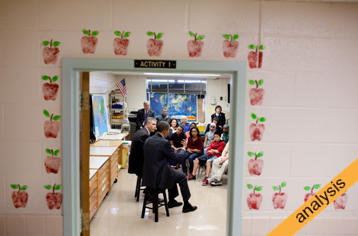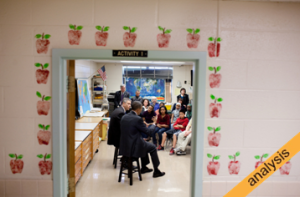Obama’s 2nd-term Education Agenda: Where Do Latinos Fit?

 By Gabriel Sanchez Zinny, Huffington Post Latino Voices
By Gabriel Sanchez Zinny, Huffington Post Latino Voices
Amidst all of the election-year sniping, education reform never became a major issue in the 2012 presidential campaign. Even though both candidates released their competing proposals, the closest education came to center stage was a couple of sharp exchanges during the debates, quickly forgotten.
 This is unfortunate, because the evidence on educational attainment, as demonstrated by recently released reports, including the important TIMSS and PIRLSS reading and math assessments, continues to show the extent to which America struggles in this area. Indeed, for all the debate over deficit reduction and national security, improving educational quality is one of the most critical challenges facing the U.S. if it hopes to maintain its international advantage in competitiveness and innovation.
This is unfortunate, because the evidence on educational attainment, as demonstrated by recently released reports, including the important TIMSS and PIRLSS reading and math assessments, continues to show the extent to which America struggles in this area. Indeed, for all the debate over deficit reduction and national security, improving educational quality is one of the most critical challenges facing the U.S. if it hopes to maintain its international advantage in competitiveness and innovation.
While reform is reliably controversial, both left and right seem to agree that the Obama administration has introduced some important initiatives during its first term — most notably, the Race to the Top program that incentivizes state-level reforms while leaving states flexibility in implementation. There is also the School Improvement Grants program, which focuses on improving low-performing schools, and the Supportive School Discipline Initiative, which begins to reform school disciplinary practices that disproportionately send minority students into the criminal justice system — a dynamic known as the “school-to-prison pipeline.”
It is in this context that Latinos, in particular, should take interest in what the administration plans for the second term. In 2012, Latinos voted nearly 3 to 1 in favor of President Obama, despite their generalized disappointment over the stagnation of immigration reform legislation. And while immigration reform was a cornerstone of the president’s proposed agenda, Latinos should be at least as concerned, if not more, with the direction of educational policies that seek to shrink the so-called “achievement gap” between white and minority students.
This gap is large, and by many measurements growing. In nearly every educational indicator, Latinos (like African Americans) perform worse on average than white students. Nationwide, Latinos have a 31 percent dropout rate, a full 9 percent worse than average. They score consistently below average on the National Assessment of Educational Progress (NAEP) exams, and only 47.2 percent graduate from college, compared to 63 percent nationally. In some states, the numbers are even worse — in Minnesota, there is a 33 percent gap between the white and Latino high school graduation rates, and the District of Colombia had the second biggest gap, of 30 percent.
While the achievement gap is a problem in itself, it is also a key driver of economic inequality, and thus, a major threat to U.S. economic performance. American innovation and productivity — and, by extension, competitiveness in the global economy — has a lot to do with its human capital. According to Pew, a record 23 percent…
This article was first published in Huffington Post Latino Voices.
Gabriel Sanchez Zinny is the managing director at Blue Star Strategies, Washington, DC, where he focuses his expertise on Latin American and domestic related policy issues.
[Photo by The White House]
